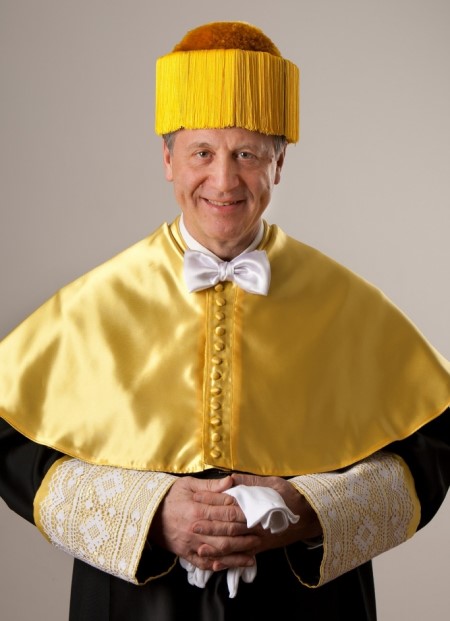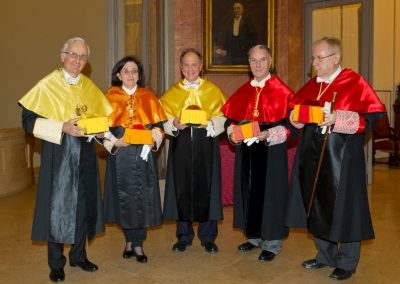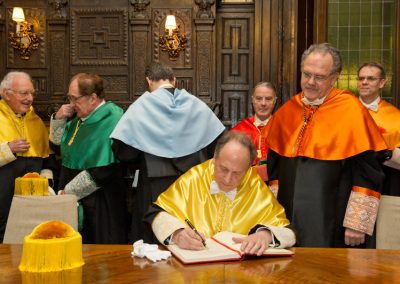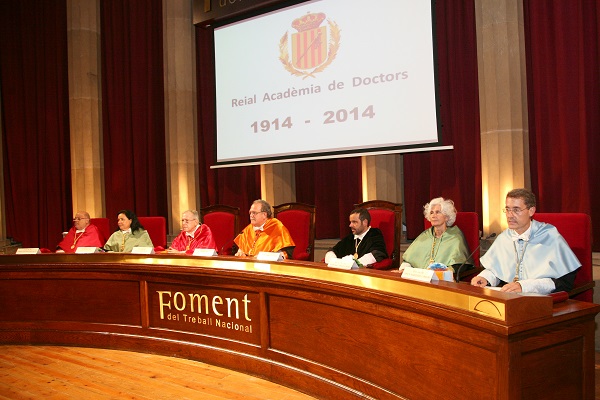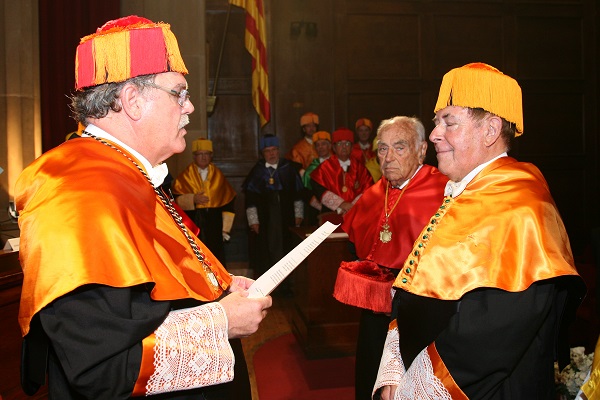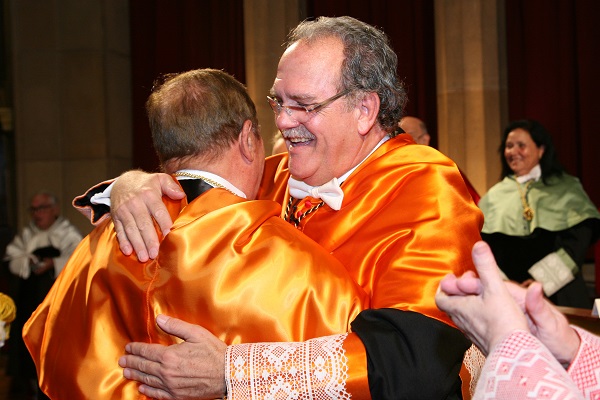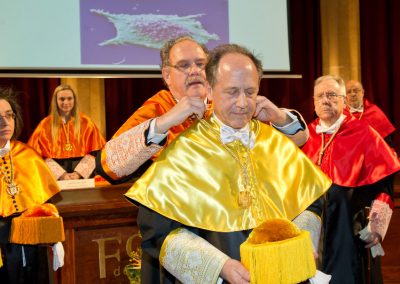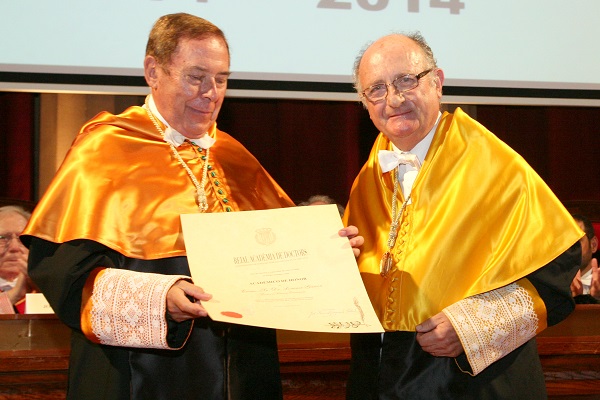Supernumerary Member
Health Sciences: Doctor of Medicine
Date of admission: February 25, 2014
Admission speech: “The Participation of the Nervous System in Blood Production and in the Cancerous Process”
Reply speech: Dr. Montserrat Guillén i Estany, Doctor of Arts
Dr. PERE GASCÓN VILAPLANA
- Born in Barcelona (Spain).
ACADEMIC QUALIFICATIONS
- Degree in Medicine and Surgery from the University of Barcelona (1974).
- Non-tenured Professor in the Chair of Pharmacology and Clinical Therapeutics at the same institution (1974–1975).
- Doctoral thesis carried out at New York University (NYU), part of which was published in the journal Science.
ACADEMIC AND PROFESSIONAL ACTIVITY
- Research Associate in the Department of Pharmacology, NYU Medical Center (1975–1977).
- Clinical Associate at the National Institutes of Health (NIH), Bethesda, Maryland. First Spaniard to hold this highly competitive position.
- Specialist in Internal Medicine, Hematology, and Medical Oncology by the American Board of Internal Medicine.
- Additional training at the Washington University School of Medicine, St. Louis (Missouri), known as “the Harvard of the Midwest.”
- At age 36, Head of the Hematology-Oncology Department at the New Jersey Medical School.
- Associate Professor with tenure (1991) and later Full Professor with tenure (1997).
- Member of the prestigious Alpha Omega Alpha Honor Medical Society (1997).
- Selected among the Best Doctors in America (1998).
- In 1999, he returned to Barcelona to serve as Head of the Medical Oncology Department at the Hospital Clínic de Barcelona.
- Scientific Coordinator of the Clinical Institute of Hemato-Oncological Diseases (ICMHO).
- Associate Professor at the University of Barcelona since 2009.
- Corresponding Member of the Royal Academy of Medicine of Catalonia (2011).
- Qualified as University Professor of Medicine (2012).
- President of the Oncology Section of the Academy of Medical Sciences of Catalonia and the Balearic Islands (2004).
- Trustee of the HUMANITAS Foundation (2005).
- Member of the Board of Directors of the Spanish Association for Cancer Research (ASEICA) (2008–present).
- Member of the Scientific Committee of the Spanish Association Against Cancer (AECC) in Barcelona.
AWARDS AND HONOURS
- Physician of the Year in New Jersey, awarded by the American College of Physicians (1995).
- Elected member of scientific societies with numerous international awards.
PUBLICATIONS
- Over 195 scientific publications (total impact factor: 1168.122; more than 5,600 citations).
- 64% of his papers published in first-quartile journals (Q1).
- 51 book chapters.
- Significant contributions in neurohematology, myelofibrosis, and neuro-oncology, with major impact on tumor microenvironment and bone metastasis research.

